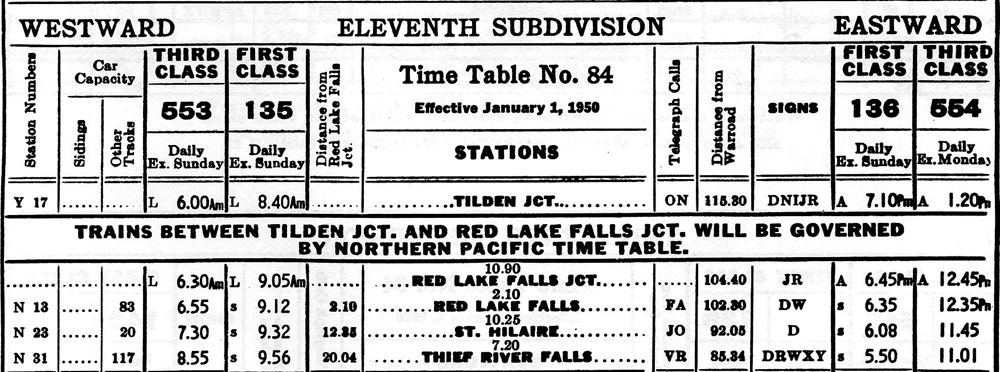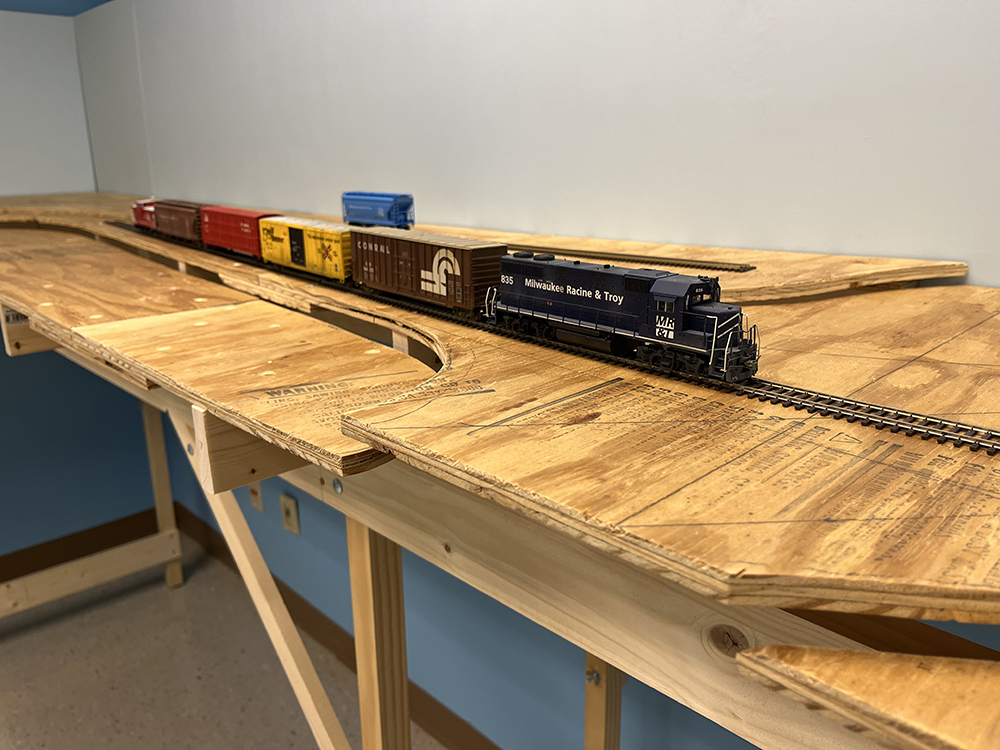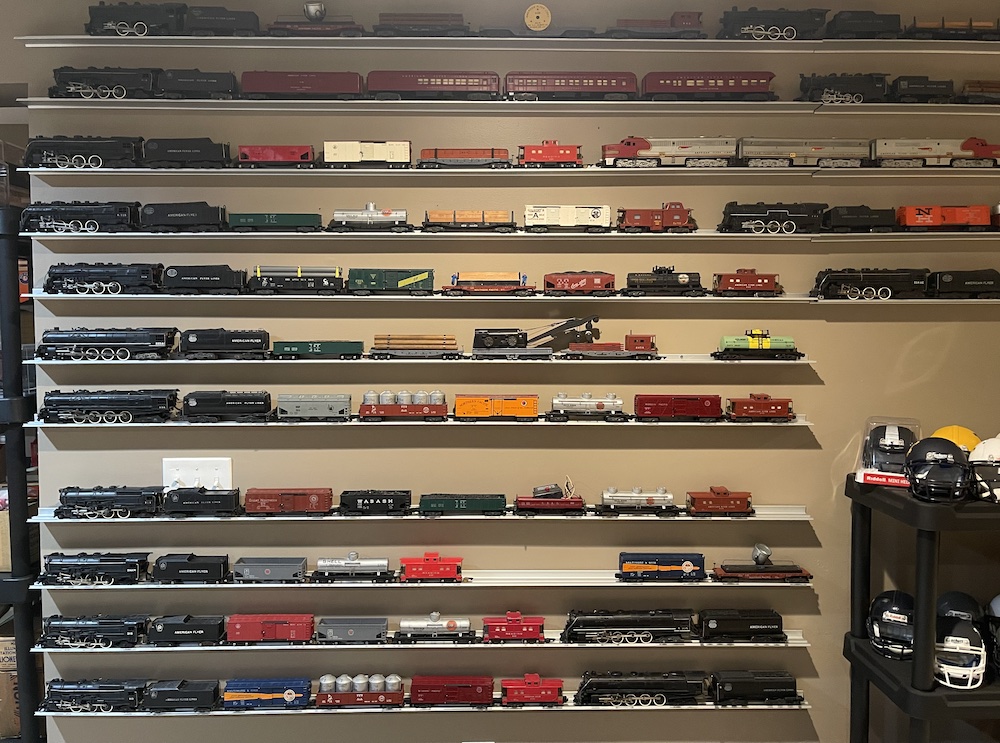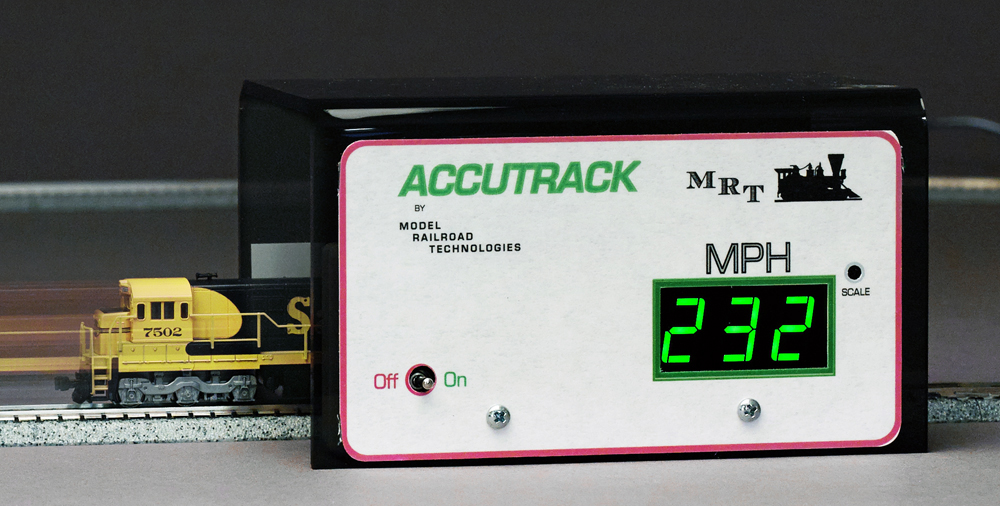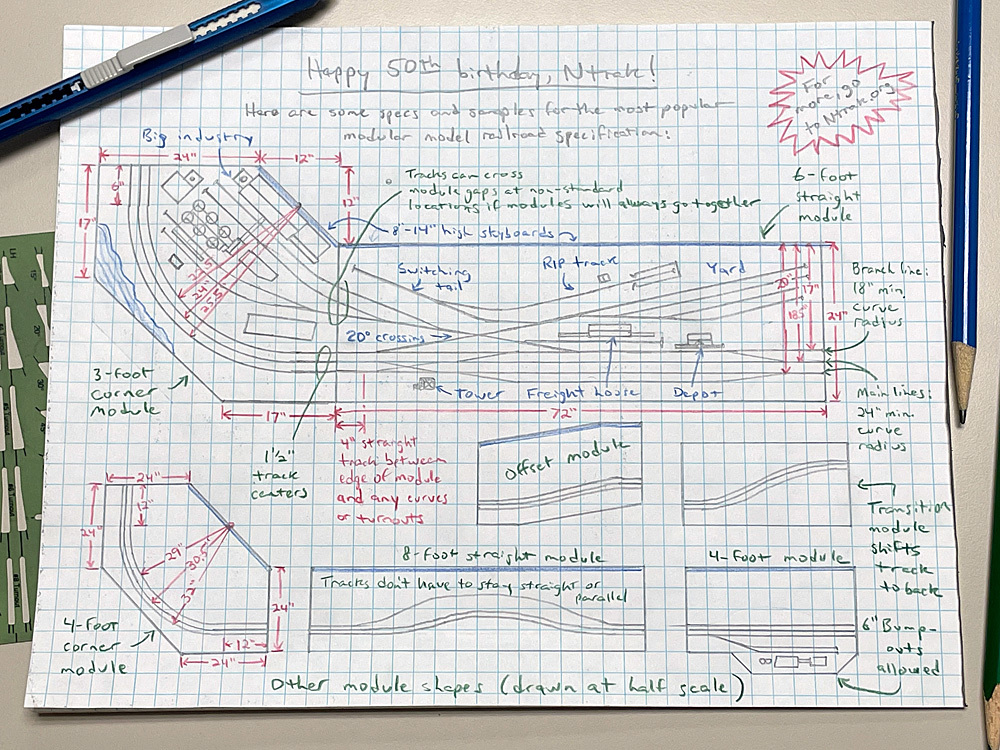
To mark the 50th anniversary of Ntrak, I thought I’d take a look at the Ntrak modular standard and sketch up a sample track plan for a couple modules.
Ntrak started at an N scalers’ gathering in Signal Hill, Calif., in 1973, where the modelers were discussing ways to get more people into their favorite scale. The answer they came up with was to get their trains out of their garages and make their layouts portable. The prototype Ntrak module was built by Ben Davis, one of the founders of the Belmont Shore Model RR Club, one of the first N scale clubs in the nation. This module was exhibited at the 1973 Model Railroad Industry Association show in Costa Mesa, Calif. A year later, the Belmont club displayed a 12 x 72-foot Ntrak layout at the 1974 National Model Railroad Association national convention in San Diego. Today, the NRail group is the keeper of the Ntrak modular standard, as well as other N scale modular standards like Free-moN and T-Trak.
So, yeah, NTrak turned 50 this year. If it were a person, it would be old enough to join AARP. Feel old yet? I do.
The Ntrak modular standard
Ntrak allows modules of many different sizes, but the most common is a 2 x 4-foot rectangle. The allowable lengths are 2, 4, 6, or 8 feet wide. The standard depth is 2 feet, though bump-outs of up to 6” are allowed front and back to accommodate structures, track, and scenery. The back of the module should have a skyboard between 8” and 14” high.
An Ntrak module should have three main tracks: a two-track main line at the front of the module and a branch line behind it, all at an elevation of 40” above the floor. Tracks can diverge and curve within the length of the module, as long as they come back to the standard positions at the end of the module. Track must be straight and level within 4” of the end of a module.
At the ends of a module, the spacing between the tracks should be 1-1/2”. The branch line should be at 17” from the back of the module, the inner main 18-1/2”, and the front main at 20”. This puts the front main 4” from the front of a standard 24” deep module. A front passing track would fall at 21-1/2”.
Main lines must have a minimum radius of 24” and no grade. Branch lines can have an 18” minimum curve radius and a grade of up to 1.5%. Turnouts and crossovers on the three standard tracks are recommended to be no sharper than No. 6.
Optionally, a module may include a “mountain division.” This is a track 4” from the back of the module, with a maximum elevation of 3-1/8” above the main and a grade of up to 3%. A setup track 1-1/2” behind the skyboard is also allowed.
If you want to build a longer scene, like a major classification yard, you can do so with multiple modules. Tracks are allowed to cross the module gaps anywhere if the modules will always be used together.
For more detailed information about the Ntrak modular standard, download the Ntrak Module Manual from NRail’s website.
My Ntrak module design
To make my sample Ntrak module design more operationally interesting, I decided to sketch up two modules designed to always be used together. That way, I could have tracks cross the module junction wherever I wanted. This let me put a big industry on the 3-foot corner module, a space that otherwise would be difficult for trains to access. There’s no room on a 3-foot corner module for a turnout that would serve the inside of the curve. (On the other hand, a 4-foot corner module has 1 foot of straight track between the end of the module and where the curve begins, so a turnout could be inserted there.)
To increase the length of spurs on the 6-foot straight module, I placed the two turnouts off the branch line so their tracks would cross at grade. This gave me more room for the corner industry’s yard ladder so I wouldn’t have any turnouts crossing the module joint. I didn’t have a particular industry in mind for the corner module when I sketched in some generic buildings, a tank farm, and a tank car loading/unloading platform. But after pondering what I drew, I think a paper mill, chemical plant, or plastics factory would be suitable.
Back on the 6-foot straight module, I added an outer passing track and some crossovers between the mains and the branch. The Ntrak standard calls for mainline turnouts to be at least No. 6, so that’s what I drew. Trains can now pass in both directions here, and both mains can access the inner tracks. I added an interlocking tower to protect trains on that complicated trackwork.
Next up is a passenger depot and a freight house served by a switchback spur. Since Ntrak modules are usually operated with a club, trains of any era could conceivably run on these rails. But I like passenger operations, so I wanted my module to be able to handle them.
Next is a four-track classification yard, for operators who prefer the mental exercise of building and breaking down trains rather than running on the main. To keep the main track clear, I added a tail track for switching. Putting a Repair-In-Place (RIP) track with a small car repair shop on a switchback adds another source of operating interest to the module.
Building a layout to the Ntrak modular standard, or any similar standard, might seem constraining to more prototypical or free-form track planners. But between the limits of those module ends, there’s still room for a lot of creativity.
(For a look at Free-mo, a multi-scale modular standard, check out my previous Sketching With Steve column about the Free-mo standard, “Designing a Free-mo module,” and “What is Free-mo?” on our website, Trains.com.)






